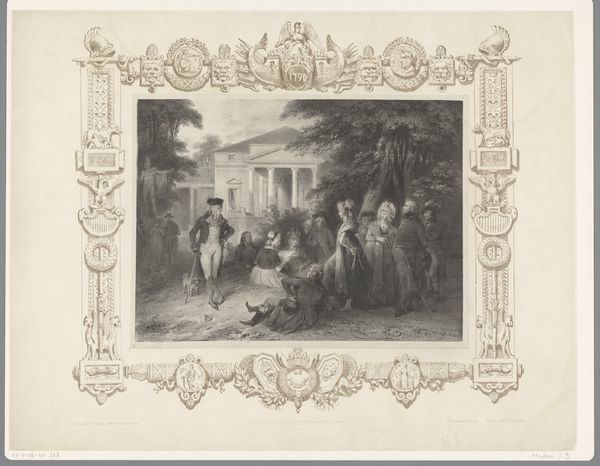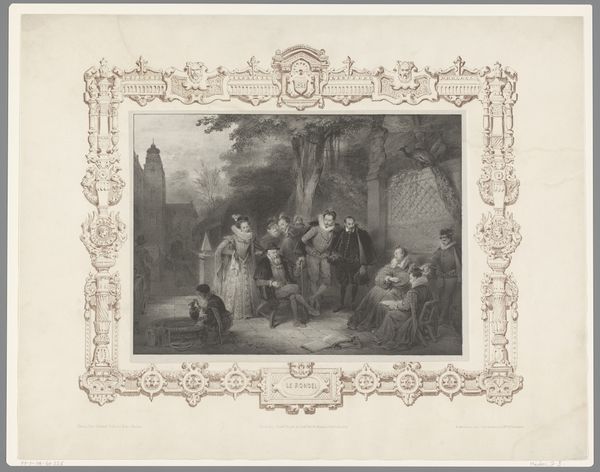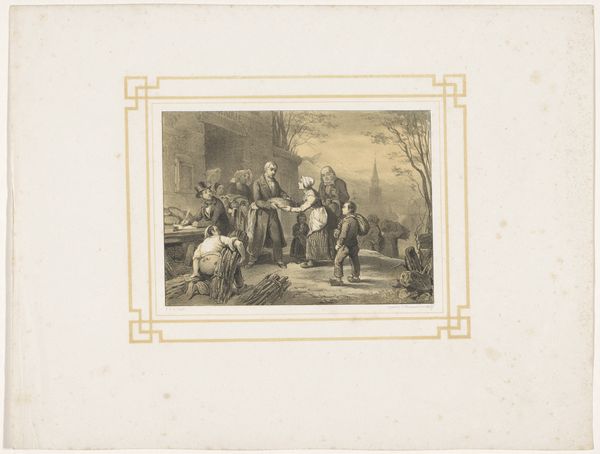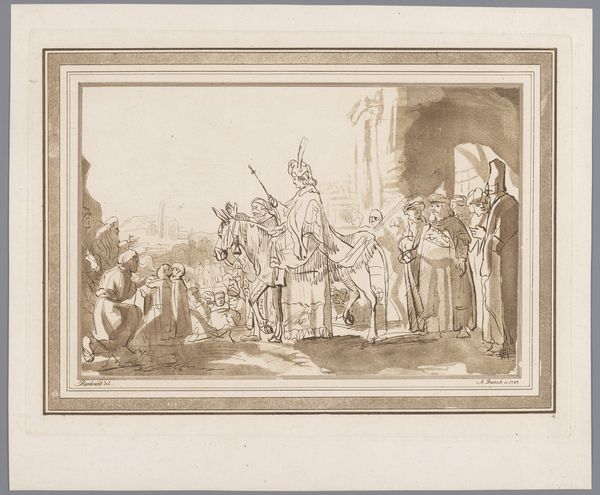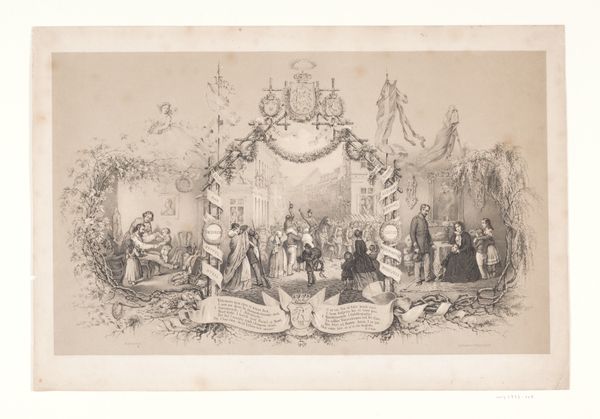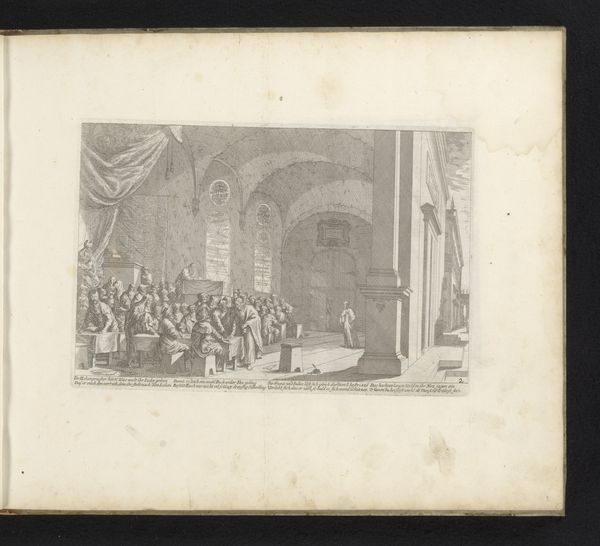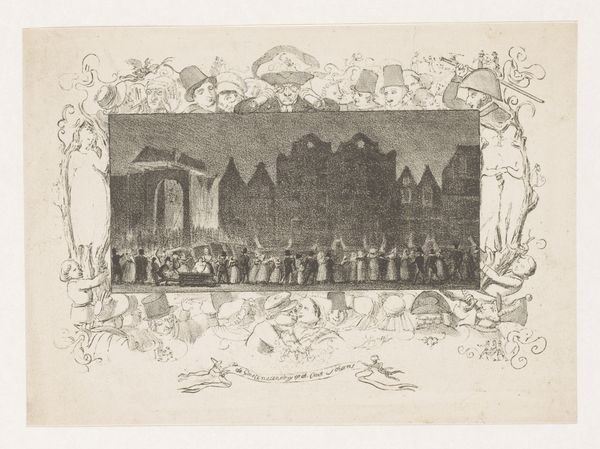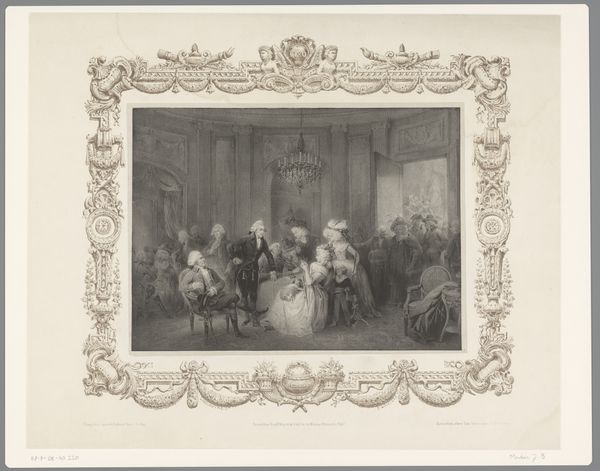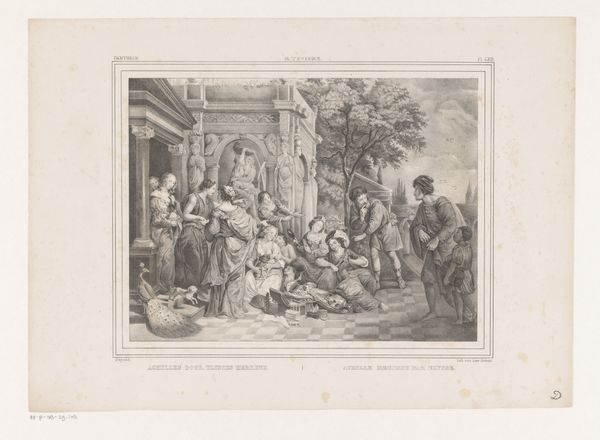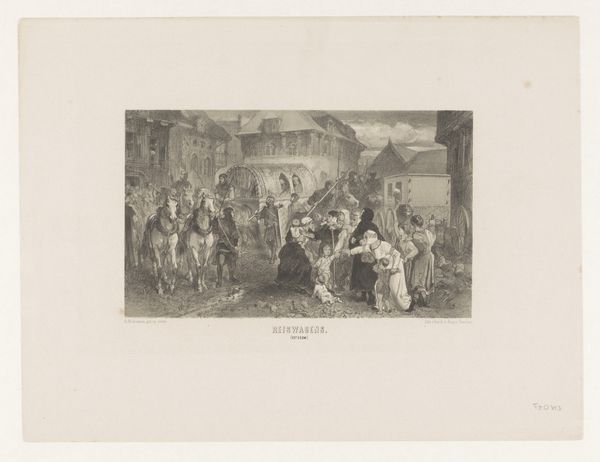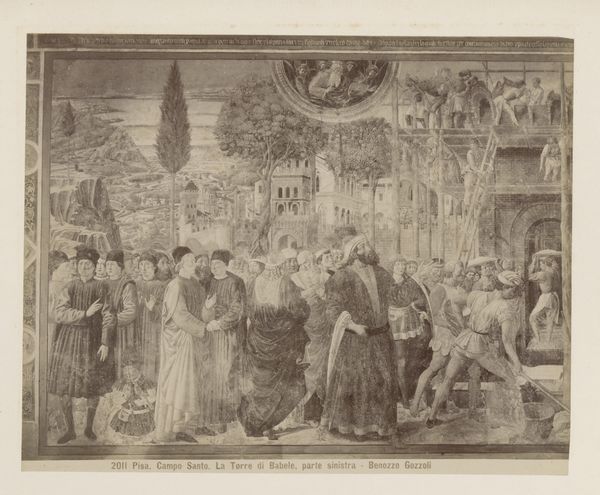
drawing, print, engraving
#
drawing
#
narrative-art
# print
#
figuration
#
classicism
#
romanticism
#
genre-painting
#
history-painting
#
engraving
Dimensions: height 445 mm, width 571 mm
Copyright: Rijks Museum: Open Domain
Curator: Jean-Baptiste Madou created this engraving between 1835 and 1837. It's entitled "Jonkvrouw met gevolg wordt ontvangen op een kasteel," which translates to "Young woman and entourage are received at a castle." It's currently held at the Rijksmuseum. Editor: What strikes me immediately is the contrast. It feels staged, but also oddly fragile given the scene depicted. The soft rendering of the figures almost undermines the formality of the reception. Curator: I'm intrigued by the material execution. Madou worked meticulously in engraving to create this piece, suggesting a wide accessibility to this depiction. Think about the economics of printmaking at the time – who had access, who might consume such images? It speaks to a democratization of historical narrative. Editor: Yes, the method suggests broad consumption, but the imagery is carefully chosen. Note the woman's central positioning; her clothing contrasts dramatically with the other figures. The figures around her look like historical stand-ins, rather than individualized people. Curator: Absolutely, that central figure’s very literally foregrounded. But even so, think about the materials, the paper, the ink – these have lifespans too, histories of trade, manufacture, and the social forces involved in distribution. Editor: What I see is a deliberate layering of symbolic weight. Castles represent not only literal fortification but also power, lineage, and cultural memory. Even the way the light seems to spotlight her face, pulling her forward within this composition. What emotional echoes did such a display conjure for a 19th-century viewer? Curator: The question of its audience is compelling. For some, perhaps it recalled Romantic notions of courtly life, a yearning for a pre-industrial golden age; for others it provided inexpensive access to the visual narratives of high society. That in itself raises all kinds of provocative points. Editor: The appeal lies not only in the historical, but in the way we choose to represent it. The engraving shows how symbols function in the collective unconscious; they may morph across the decades, but core values remain deeply embedded. Curator: I think we’ve started to unpack the historical importance, from both an aesthetic and production standpoint, for this engraving. Editor: Indeed. And what began as a first impression is now, thanks to material context, far more multifaceted.
Comments
No comments
Be the first to comment and join the conversation on the ultimate creative platform.
